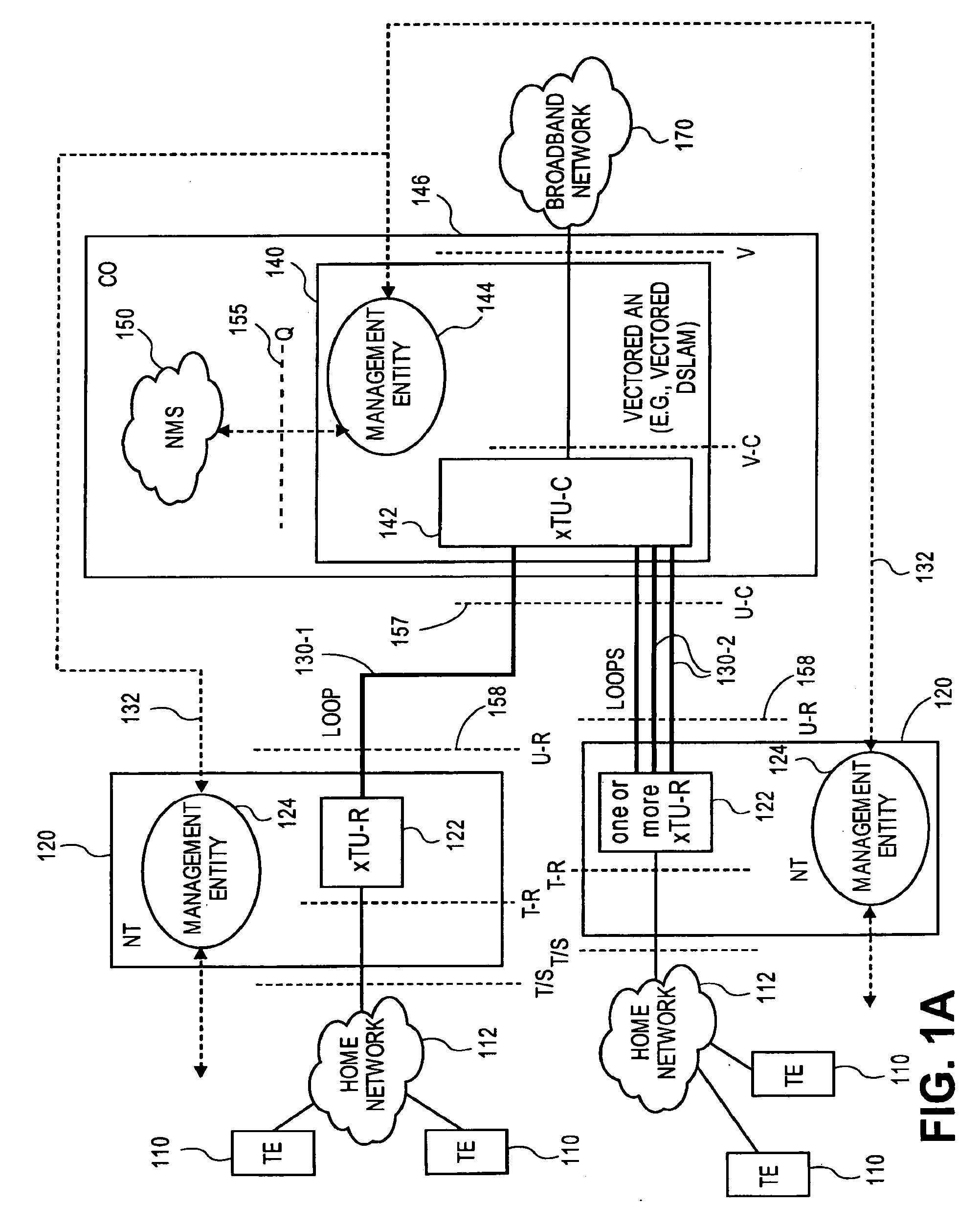DSL System
a digital communication system and system technology, applied in the field of digital communication system management, can solve the problems of significantly higher complexity of dsl vectoring technology compared to non-vectored dsl technology
- Summary
- Abstract
- Description
- Claims
- Application Information
AI Technical Summary
Benefits of technology
Problems solved by technology
Method used
Image
Examples
example 1
[0097]If a modem belonging to a vectored system shuts down, then the effects are minimal for vectoring operations at the transmitter. For vectoring operations at the receiver, however, such a modem shutdown has significant effects. Noise decorrelation (and / or other operations requiring feedback) may lose effectiveness if a line is lost. One potential receiver solution is for the decoding operation of the line to continue in a state where the noise samples are detected and provided to the other receiver paths for noise decorrelation. With such an orderly modem shutdown, the SMC may send instructions to coordinate the shutdown and prepare vectoring modules for the change. Thus the DSMC plays an important role in such a shutdown.
example 2
[0098]If a new line needs to enter a vectored system, a series of steps are taken to permit operation without disruption. If a SMC has information about the crosstalk coupling and operation status of other lines, then the DSMC can control the introduction of the new line, minimizing crosstalk effects. One way to achieve this is to restrict the transmitted power of the new line to low levels initially, and to increase the power only gradually. The interface requirements for the above functions of the DSMC are modest. If the SMC does not have information about the new line's crosstalk coupling, noise correlation and / or operation status, the SMC instructs the new DSL line to provide its operational data, and collects the new line's operational data from the vectored DSL system. The DSMC instructs the digital cross-connect to assign the new line to one of available vectoring engines.
example 3
[0099]A function of the SMC in non-vectored as well as vectored operation is the determination of the maximum safe data rate at which the line can operate with acceptably low probability of service disruption or loss (or customer complaint). This vectoring function is strongly related to other lines in the binder and the selected data rates and crosstalking priority choices. A SMC can calculate the best data rates, including not only the binder crosstalk information and consequent canceller coefficients, but also the history of the line and binder in terms of use patterns, noise occurrences, instances of impulse noise or other non-stationary behavior. Such calculations also can incorporate the service providers' products (that is, data rates and quality of service requirements at those data rates, which are also a function of the customer service selection and willingness to pay), billing management, and general provisioning practice and coordination with operations. The SMC then su...
PUM
 Login to View More
Login to View More Abstract
Description
Claims
Application Information
 Login to View More
Login to View More - Generate Ideas
- Intellectual Property
- Life Sciences
- Materials
- Tech Scout
- Unparalleled Data Quality
- Higher Quality Content
- 60% Fewer Hallucinations
Browse by: Latest US Patents, China's latest patents, Technical Efficacy Thesaurus, Application Domain, Technology Topic, Popular Technical Reports.
© 2025 PatSnap. All rights reserved.Legal|Privacy policy|Modern Slavery Act Transparency Statement|Sitemap|About US| Contact US: help@patsnap.com



